In today’s fast-moving business landscape, agility is no longer optional—it’s the foundation of successful, resilient organizations. Companies that fail to adapt quickly are left behind, while those that embrace change continuously deliver value, respond to market shifts, and drive innovation. Agile transformation is more than just implementing new processes; it’s about cultivating a mindset that values collaboration, speed, and adaptability.
While Agile methodologies provide the frameworks for rapid development and iterative improvement, DevSecOps takes it a step further—integrating security at every stage of the development lifecycle. This combination of Agile and DevSecOps creates a powerful ecosystem of efficiency, security, and innovation.
Let’s explore the major Agile frameworks—Scrum, Kanban, and eXtreme Programming (XP)—along with DevSecOps to see how they work together to drive high-performance organizations.
Scrum: The Rhythm of Iteration and Continuous Learning
Scrum is one of the most widely used Agile frameworks, designed to create a rhythm of continuous improvement through short, time-boxed iterations called sprints. A sprint usually lasts two to four weeks, and at the end of each sprint, the team delivers a working increment of the product.
Scrum thrives on transparency, inspection, and adaptation. Teams hold daily stand-ups to synchronize their efforts, sprint planning sessions to define priorities, and retrospectives to reflect and improve. By emphasizing incremental progress, Scrum reduces the risk of project failures while ensuring continuous value delivery.
Scrum in Action:
A healthcare software company implementing Scrum was able to reduce development time by 50%, leading to faster regulatory approvals for electronic health records (EHR) updates. The short sprints enabled quick feedback from medical professionals, ensuring that the software met compliance standards without sacrificing speed.
Kanban: The Flow of Work and Efficiency in Motion
Unlike Scrum, which operates on fixed sprints, Kanban visualizes work and optimizes the flow of tasks. Teams track work items on a Kanban board, moving them from “To Do” to “In Progress” to “Done.”
Kanban’s core strength lies in its flexibility—it allows teams to respond to new priorities instantly rather than waiting for the next sprint. By limiting Work-In-Progress (WIP), teams prevent overload and ensure steady, uninterrupted workflows.
Kanban in Action:
An IT security team in a hospital network adopted Kanban to prioritize and track software patches and security updates. This improved response times for critical vulnerabilities, ensuring continuous protection of patient data. By implementing WIP limits, they reduced deployment errors and accelerated incident response times.
eXtreme Programming (XP): Pushing the Boundaries of Software Excellence
XP, or eXtreme Programming, takes Agile principles and applies them to software engineering with a strong focus on quality. It introduces Test-Driven Development (TDD), where developers write tests before writing actual code, ensuring robust and error-free software. XP also emphasizes continuous integration, frequent releases, and pair programming.
XP excels in highly dynamic environments where requirements change frequently. It ensures that code is always in a deployable state, reducing technical debt and costly rework.
XP in Action:
A fintech company developing fraud detection software adopted XP principles, integrating automated testing and continuous deployment. By implementing TDD and pair programming, the team improved software accuracy and cut security vulnerabilities by 70%.
DevSecOps: Embedding Security into Agile Development
While Agile frameworks accelerate development, security has often been treated as an afterthought. DevSecOps solves this problem by integrating security into the Agile development lifecycle—ensuring that security is not a bottleneck, but a built-in feature.
Traditional security models rely on late-stage testing, which often leads to delays, vulnerabilities, and costly fixes. DevSecOps, on the other hand, automates security testing throughout development, enabling teams to detect and fix vulnerabilities early.
Key DevSecOps Practices:
- Shift-Left Security – Security is integrated from the beginning of development, not just before release.
- Continuous Security Scanning – Automated tools identify vulnerabilities at every stage.
- Infrastructure as Code (IaC) – Secure configurations are managed through code, reducing manual errors.
- Zero Trust Architecture – Ensuring that no user or system is inherently trusted without verification.
DevSecOps in Action:
A government agency implementing Agile for digital modernization integrated DevSecOps to harden cybersecurity across mission-critical systems. By incorporating continuous security testing and automated compliance checks, they reduced security vulnerabilities by 80% while accelerating software delivery.
How Agile and DevSecOps Work Together
Agile focuses on speed, collaboration, and continuous improvement, while DevSecOps ensures that security is embedded into every process. Together, they create a powerful framework for secure, high-performance product development.
Combining Agile & DevSecOps for Maximum Impact:
- Scrum + DevSecOps → Predictable delivery cycles with built-in security testing at every sprint.
- Kanban + DevSecOps → Real-time vulnerability tracking and prioritization of security fixes.
- XP + DevSecOps → Test-driven security, ensuring every piece of code is tested before deployment.
By adopting both Agile and DevSecOps, companies can move fast without compromising security, quality, or compliance.
Why This Matters More Than Ever
In today’s digital landscape, businesses are under immense pressure to deliver software faster while ensuring security and compliance. Agile and DevSecOps bridge this gap, enabling organizations to innovate, scale, and protect sensitive data without trade-offs.
By embracing Agile and DevSecOps together, businesses can:
- Deliver high-quality software at speed.
- Reduce security vulnerabilities early in the development lifecycle.
- Improve collaboration between development, operations, and security teams.
- Accelerate response times to new threats and compliance requirements.
At Apstax Solutions, we specialize in helping businesses navigate Agile transformations while integrating DevSecOps best practices. Our approach ensures that speed and security are not competing priorities, but complementary strengths.
Are You Ready to Embrace Agile & DevSecOps?
The future belongs to organizations that can move fast, innovate boldly, and stay secure. By adopting Scrum, Kanban, XP, and DevSecOps, businesses gain the competitive edge needed to thrive in today’s digital world.
At Apstax Solutions, we help companies build high-performing teams, optimize workflows, and embed security into every stage of development.






